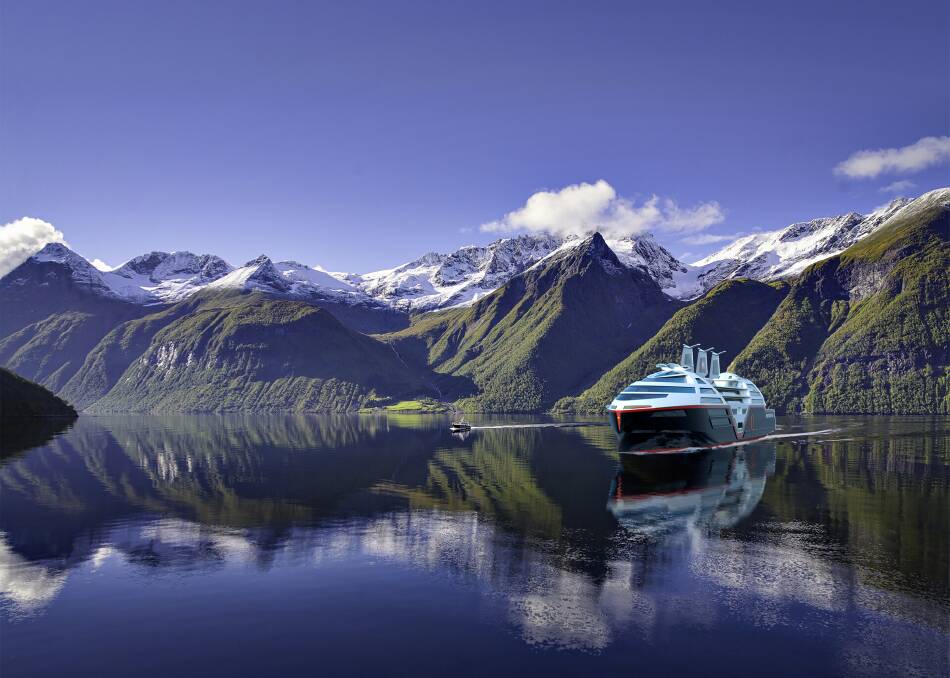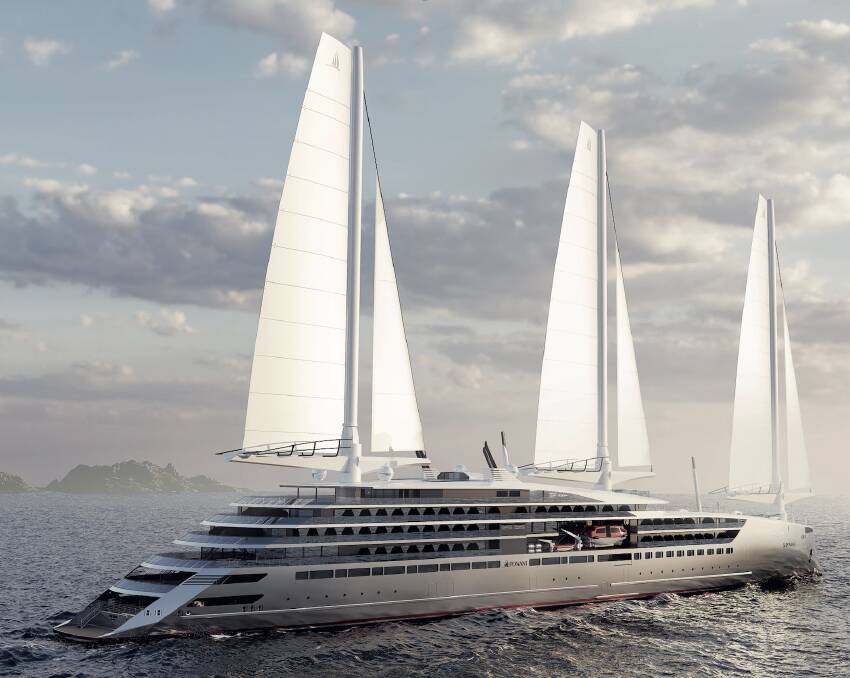The issue of sustainability is never far from discussions about the future of travel - but is it even possible for the cruise industry?
Create a free account to read this article
$0/
(min cost $0)
or signup to continue reading
In the past, the cruise industry hasn't been lauded for its green credentials. From air pollution and greenhouse gas emissions to the illegal dumping of waste into the ocean, cruise companies have been guilty of it all. The urgent calls for every industry to clean up its act, however, have been heard, and when it comes to what's happening on our oceans, cruising is no longer the ogre some make out.

As Ray Ma, travel lead at Accenture Australia and New Zealand, explains, cruising accounts for less than one per cent of tourism-related global greenhouse emissions. "That's significantly less compared to aviation at 17 per cent, for example," says Ma. "However, like aviation, the cruise industry is considered a 'hard to abate' industry. That means its pathway to net zero will take much longer compared to other travel industries, such as hospitality."
In line with the Paris Agreement, Cruise Lines International Association (CLIA) members have committed to net zero carbon cruising by 2050.
"It's a commitment for the long-term, but it's already delivering results and building momentum," says CLIA Australasian managing director Joel Katz. "The latest ships being deployed on our oceans are the most sustainable to have ever sailed. Cruise ships represent less than one per cent of the world maritime fleet, but we are an industry at the forefront in delivering advances in sustainability at sea," he says.
Cruising accounts for less than one per cent of tourism-related global greenhouse emissions. That's significantly less compared to aviation at 17 per cent.
Many cruise lines are already making big steps towards protecting the environment. Some are developing new ships with the capability of making huge reductions in carbon emissions.
Ponant released the details of the Swap2Zero project, a 181-metre transoceanic ship with about a hundred staterooms that will include a sail power system, photovoltaic panels to produce solar power, onboard carbon capture and other technologies to aim for zero CO2 equivalent emissions (i.e., CO2, methane and N10).
Already on the water are Hurtigruten's hybrid electric expedition ships, but it has unveiled plans for Sea Zero, a zero-emission ship that will - one day - make up the Hurtigruten Norway fleet. The first, like Ponant's Swap2 Zero, is expected to be sailing by 2030.
It's a commitment for the long-term, but it's already delivering results.
"We don't believe industrial carbon offsetting is the right thing to do," says Damian Perry, Hurtigruten's APAC managing director. "There are so many questions around it. We decided the only way we can truly make a difference is through innovation." The company was the first in the world to stop using single-use plastic and today invests in biofuel projects, works with local communities to ensure they are benefitting from ship visitation, and recycles ghost nets into lanyards and jewellery.
"This is probably the most exciting project, though, because it's a ship that will use the environment and coast of Norway to its advantage," says Perry. "In summer, there are very long days and plenty of wind, so this new sail and solar concept, as well as other amazing design initiatives, massively reduces any emissions.
"It's not a standalone Hurtigruten initiative. We've been able to bring partners in across Europe and those research partners are working with us because they see this as the future of zero-emission ships."

Both Ponant and Hurtigruten are at the luxury end of the cruising spectrum, but a swathe of companies - Princess, Carnival, P&O, Disney, MSC - have chosen to build new ships that use liquified natural gas (LNG), which emits about 25 per cent less carbon than conventional marine fuels. But LNG is far from perfect - the most popular LNG marine engines leak potent greenhouse gases, mostly methane, and often at substantially higher levels than marine fuel.
Environmental groups, of course, want to see change come faster. "There are a number of things the cruise industry can do immediately to be more sustainable and, frankly, consumers should demand it," says Caroline Bonfield, shipping emissions analyst at Ocean Conservancy. "Cruise lines need to cut their emissions drastically and can make a big dent through efficiency improvements and new technologies, such as wind-assisted ships and the use of batteries and fuel cells.
Read more on Explore:
"Ships need to switch to truly green fuels like green hydrogen or ammonia instead of shifting to fuels like LNG, which only exacerbate their climate impacts."
She lists other initiatives like installing (and using) shore power capability and developing advanced water treatment systems.
There are other ways cruise companies can be more sustainable. Pioneering Australian-owned cruise line Aurora Expeditions has recently released its first publicly available impact report.
"This is about transparency and accountability for us as a business, and acknowledging where we are on our sustainability journey," says Aurora CEO Michael Heath.
If you're looking for other green elements, ask your travel agent about what different lines offer, says Ray Ma: "In addition to decarbonising the industry, all major players have also begun working towards a more sustainable future, applying a multi-prong approach focused on issues such as addressing emissions, water conservation, minimising waste and protecting oceans."
GREEN MOVES FOR YOUR NEXT CRUISE
1. Try not to use single-use plastics. Bring a reusable water bottle with you and fill it in your cabin or at a drinks station.
2. Some cruise lines now have large refillable bottles for body wash, shampoo and conditioner, but if yours doesn't (or you can't find out if it does) bring your own toiletries. It'll stop you using dozens of tiny tubes over the course of the cruise.
3. Find out where you can recycle items onboard and make it your mission to use them whenever you can.
4. Reduce your own waste. Institute a 'take what you want, but eat what you take mindset at the buffet. Take shorter showers and be sure to reuse your towels, especially pool towels, and sheets.
5. Choose shore excursions that minimise emissions. Walks, e-bike rides or itineraries utilising public transport are all good options.




